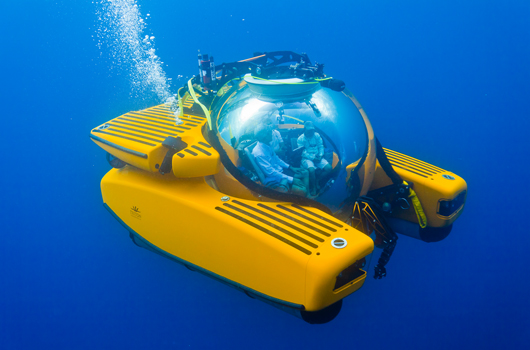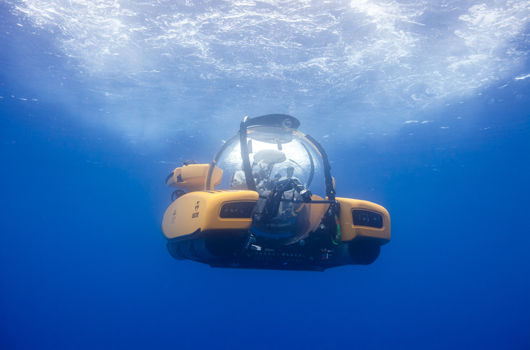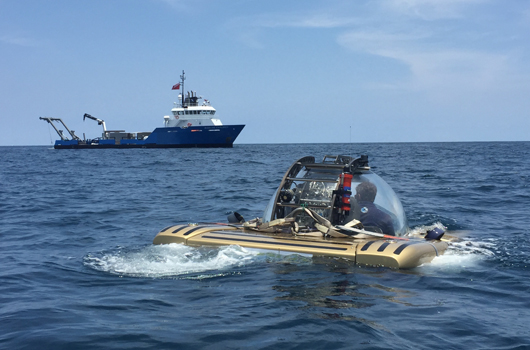 As a child I grew up on a diet of Voyage to the Bottom of the Sea, Stingray and Jacques Cousteau. Voyage to the Bottom of the Sea was based around the adventures of the submarine Seaview, fighting nameless foreign governments, aliens and the “usual” monsters from the deep. In Stingray, Troy Tempest and his companion Phones, also battled with a hostile power and sea monsters but are rescued by a mermaid, Marina. Cousteau of course, the pioneer of SCUBA diving, who brought the wonders of the ocean into households across the world with amazing characters, futuristic technology and a frisson of danger.
As a child I grew up on a diet of Voyage to the Bottom of the Sea, Stingray and Jacques Cousteau. Voyage to the Bottom of the Sea was based around the adventures of the submarine Seaview, fighting nameless foreign governments, aliens and the “usual” monsters from the deep. In Stingray, Troy Tempest and his companion Phones, also battled with a hostile power and sea monsters but are rescued by a mermaid, Marina. Cousteau of course, the pioneer of SCUBA diving, who brought the wonders of the ocean into households across the world with amazing characters, futuristic technology and a frisson of danger.
All of these combined the human wonder of the mysteries of the deep, exotic technologies and the fear of the unknown. Somehow we seem to have forgotten the power that the ocean has to captivate the human mind, especially that of a child.
Jump forward 40 years and I find myself about to undertake my own voyage to the bottom of the sea.
On the 18th July I will be joining the Nekton Foundation on the first XL Catlin Deep-Ocean Survey. Scientists from the Ocean Research and Conservation group will be joining two ships, the CCGS Hudson and the Baseline Explorer.
The Hudson will be leaving from Halifax, Nova Scotia, and sailing through the Sargasso Sea visiting newly-discovered sponge ecosystems and seamounts as well as studying the Gulf Stream.
I will be diving around Bermuda and its associated seamounts with two Triton submersibles and a team of technical divers from the Baseline Explorer with GlobalSubDive. The Tritons are remarkable submersibles because the pressure hull is formed by transparent acrylic. This means that when the submersible dives you have an unparalleled view of the surrounding ocean. In fact, the sphere is so transparent it is almost like sitting in the ocean itself with a feeling that you can almost reach out and touch the remarkable animals around you.
Bermuda has a long history of deep-submergence research. William Beebe, an American was granted the use of Nonsuch Island in Bermuda in 1928 as a research station which he intended to use to investigate the adjacent sea to a depth of 2 miles. Beebe had already lead an expedition to the Sargasso Sea in the steamer Arcturus sampling the associated fauna of floating Sargassum weed as well as the deep-sea pelagic fauna of the area.
Beebe wanted to visit the deep sea in person and published his design for a submersible in the New York Times. He subsequently met the engineer Otis Barton who dismissed Beebe’s idea for a cylindrical submersible and they agreed to build a bathysphere. This comprised a crude steel sphere, with two small fused-quartz portholes and containing cylinders for oxygen and CO2 scrubbers, all suspended from a steel cable from a ship on the surface. The vehicle was built in 1929 and between 1930 and 1934 Beebe and Barton made dives into the pelagic environment as well as down the slopes of the island of Bermuda, reaching a depth of 923m, half a mile down. They carried out the first in-situ observations of deep-sea life as well as making the first live recordings of their dives via a cable to broadcast on the radio.
Beebe’s dives inspired August Piccard who subsequently used the bathyscaphe to dive to seven miles depth in the Marianas Trench. This in turn lead to the development of more modern scientific submersibles such as Alvin which from 1967 to 1972 carried out dives on the Bermuda – Gay head biological survey. Beebe published a famous account of his diving adventures in the book Half Mile Down.
Following in the footsteps of Beebe we will be using the Triton submersibles exploring the deep-sea ecosystems around the Bermuda Platform and the Argus and Challenger Banks. The Hudson will deploy a remotely operated vehicle to continue our surveys to depths of up to 1500m.
We expect to document the deeper parts of coral reefs (mesophotic coral reef ecosystems), deep-water coral gardens, beds of calcareous and other types of algae and the haunts of deep-water groupers and snappers, large predatory fish.
This will also be the first time Nekton tries to document the health of the ocean around Bermuda using a new standardised approach to surveying ocean life and the levels of human influence. The initiative is called the XL Catlin Deep Ocean Survey, and marks XL Catlin’s third major ocean science research programme sponsorship
As well as surveying remarkable deep-sea habitats we will also be documenting debris in the deep sea and measuring levels of pollutants such as those originating from plastic which is entering the ocean. The hope is that such approaches can be spread amongst the global marine scientific community so we can build a global picture of how our oceans are doing.
The Nekton project also has an extensive public education and outreach programme and we very much hope that we can bring the deep-sea back into the forefront of the public imagination and inspire the next generation of marine biologists and ocean lovers.

